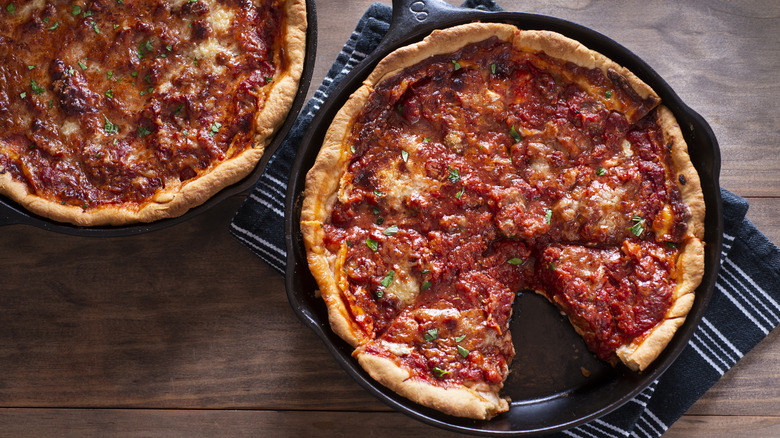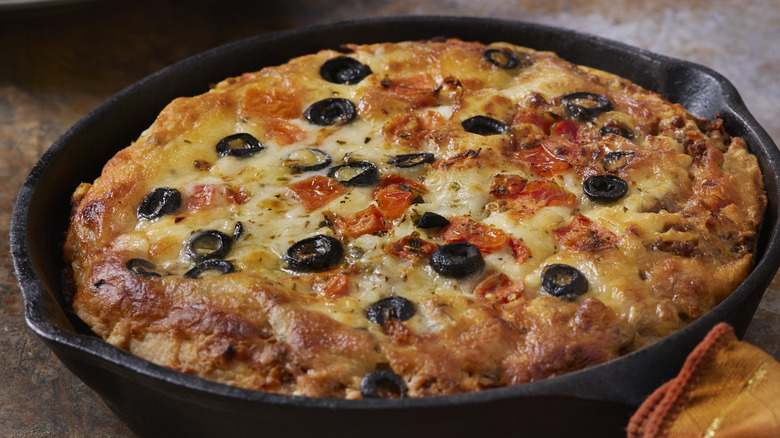Protect Your Deep Dish Pizza From A Soggy Bottom With A Cast-Iron Skillet
While you may prefer the top of your deep-dish pizza to be decadently gooey with sauce, melted cheese, meats, and more, a soggy bottom is not desirable. When the crust of your pizza is wet, it doesn't offer that satisfying contrast of textures. However, more importantly, it is not structurally sound. Have you ever picked up a soggy paper plate with one hand at a barbecue? A well-made pizza crust adds the stability that keeps your slice from flopping when you pick it up. To keep that bottom crisp, cook your deep-dish pizza in a cast-iron skillet.
A deep-dish pizza should be cooked on a hot surface that transfers heat to the food to keep the crust from getting soggy. Besides being efficient nonstick cookware that can last for generations (when properly maintained and cared for), a cast-iron skillet performs exceptionally well in this area. This makes it a suitable option for cooking deep-dish pizza with a crispy crust.
Three qualities of cast iron that make it great for crisping pizza crust
As many have learned from using an air fryer, getting a desirable, crisp exterior while maintaining a moist interior requires a high even temperature for a short amount of time. The same is true for cooking pizza: high cooking temperatures for a short amount of time produce the best results. Cast iron can withstand temperatures up to 1,500 degrees, making the material more than capable of the task.
The next quality to point out is cast iron's amazing ability to retain heat. While it is not the best at heating evenly, if you take the time to preheat the skillet slowly while rotating it every few minutes, you will get a uniformly heated cooking surface that will retain the high temperature needed to get the task done.
Arguably, the most important feature of cast iron, especially when it comes to cooking, is its emissivity. Emissivity is a material's ability to radiate infrared energy (heat). Darker objects, such as cast-iron skillets, have a higher emissivity than reflective objects, such as stainless steel. This means cast-iron skillets cook more efficiently because they are better at radiating heat. Regarding pizza crust, not only does this quality crisp the surface, but it can help reduce the moisture from wet ingredients that would otherwise contribute to creating a soggy bottom.

